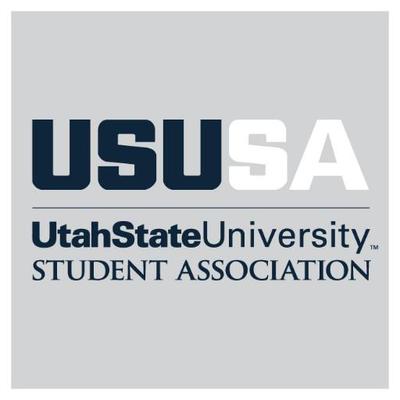USUSA officers share results of summer collaboration
Utah State University Student Association officers are ready to share the product of four months of collaboration after a controversial election held in April.
The last-minute special election — which garnered the participation of just 236 students — added the position of Student Alumni Association president to the USUSA Executive Council. Despite a petition from students for a re-vote, USUSA President Trevor Sean Olsen has moved forward with the merger, meeting “a few times” with SAA President Oakman Kennedy over the summer to discuss logistics.
“The bulk of the meetings up to this point were to see who’s advising them, where the budget’s going to be and how to work with the two traditions directors,” he said. “It’s mostly just planning meetings.”
Kennedy said the culture of SAA and USUSA are different, in that SAA directors are not elected and are united by common interests. Some directors in particular were concerned about getting along with programming officers in USUSA, as they both deal with traditions.
“There were fears, but at the end of the day, it’s the right move to make,” Kennedy said. “I don’t think either group is losing.”
The funding for the SAA President’s scholarship will continue to come from University Advancement, and beginning next year, the SAA President will receive equal compensation to other USUSA officers. Additionally, the Division of Student Services recently hired development officer Mike Bowen, who — under the direction of student services director James Morales — will be advising Kennedy. Funds for the position will be housed with Bowen.
“There’s definitely growing pains,” Kennedy said. “Especially with getting charters established for the new position.”
Olsen agreed that while there are still kinks to work out, they have an advantage after having the summer to collaborate.
“I think during school, when you’ve got classes to worry about and work, we couldn’t have done what we were able to do, really,” Kennedy added.
In addition to the some of the officers meeting over the summer, their advisers – with their new responsibilities – were able to meet and coordinate. In previous interviews, Olsen and Kennedy emphasized that it was important the change happen when it did, despite the low voter turnout.
Some students were concerned about the special election being held during finals week, which likely contributed to the low voter turnout. Just 1.5 percent of the student body voted in the election — nowhere near the 23 percent that voted during the last student election cycle. 63 percent voted in favor of the change, with 37 percent against.
“I feel confident that it was the right decision, and I think if the numbers were larger, the percentages would still be the same,” Olsen said. “If there are students who don’t feel they got to voice their opinion on the matter, I’m more than happy to talk with them and see what steps we can take to help them feel comfortable about the decision.”
Seth Merrill, a senior at the time of the election, started the petition to revote on the amendment to add the SAA president to the USUSA Executive Council. Merrill said that he wasn’t impressed in the way the election was carried out, specifically that all the amendments were voted on as one.
“I felt like USUSA was constantly saying throughout the elections that they valued students voices and wanted everyone to be heard, but when people were bring this to their attention, they weren’t actually listening,” he said.

